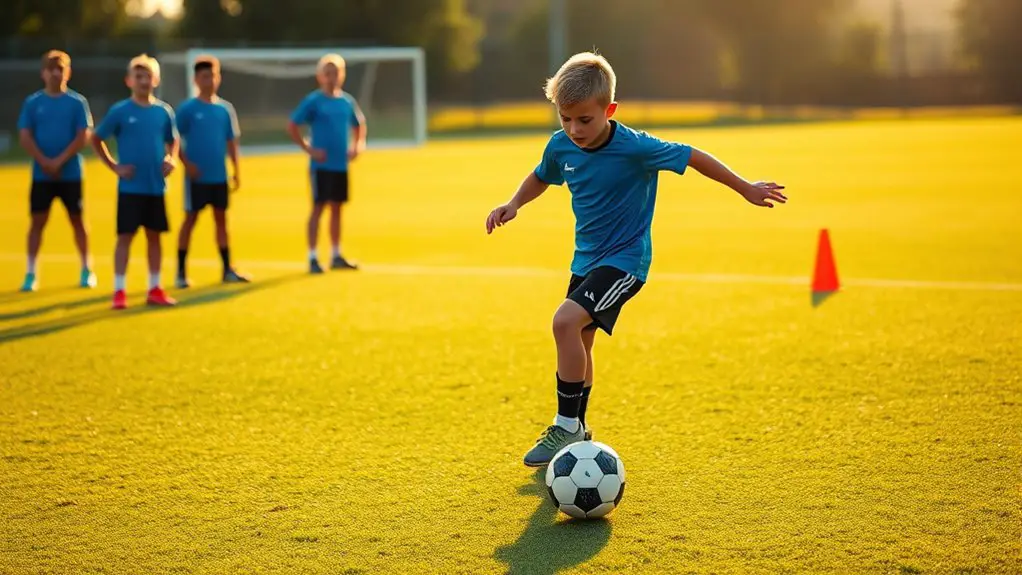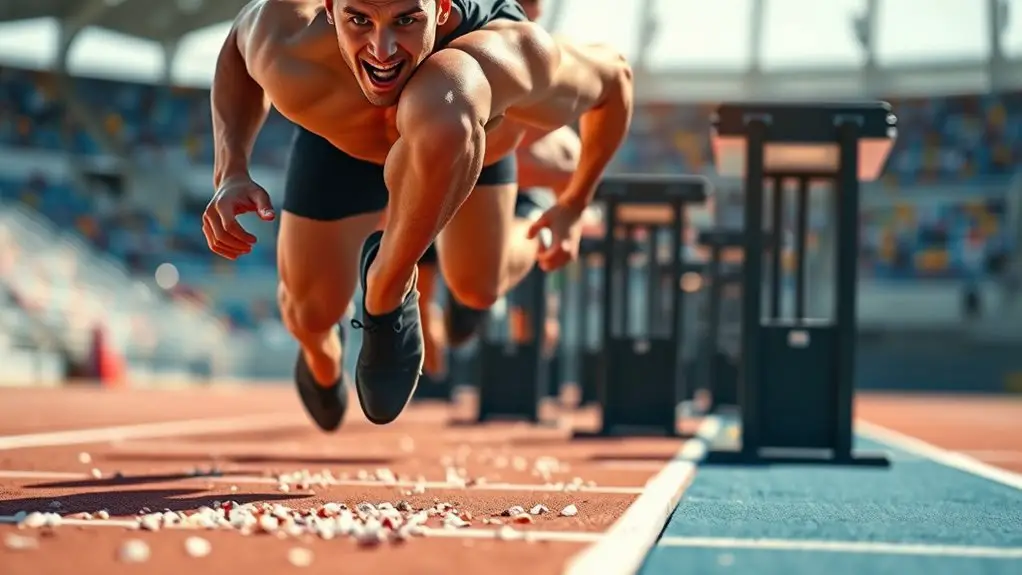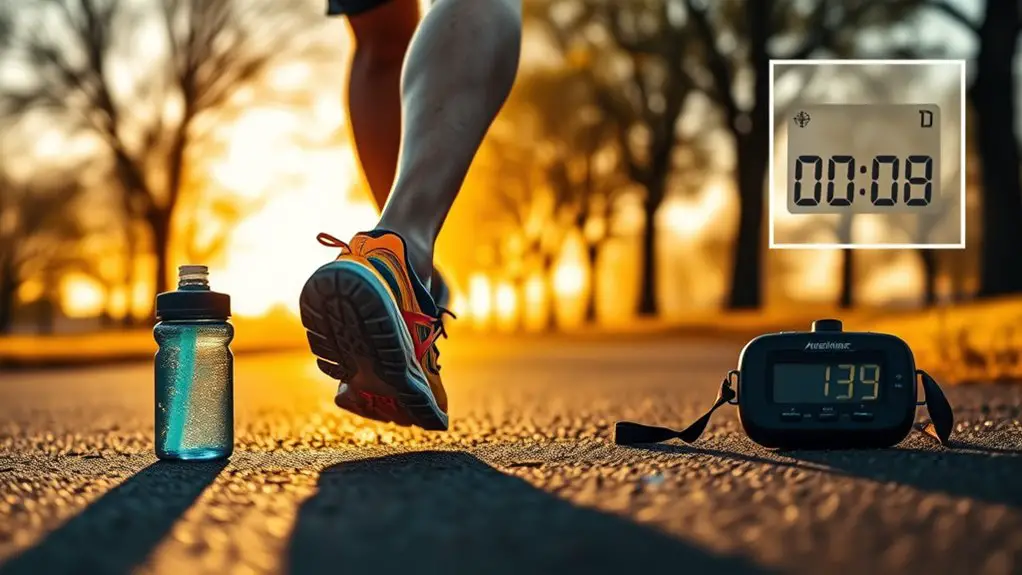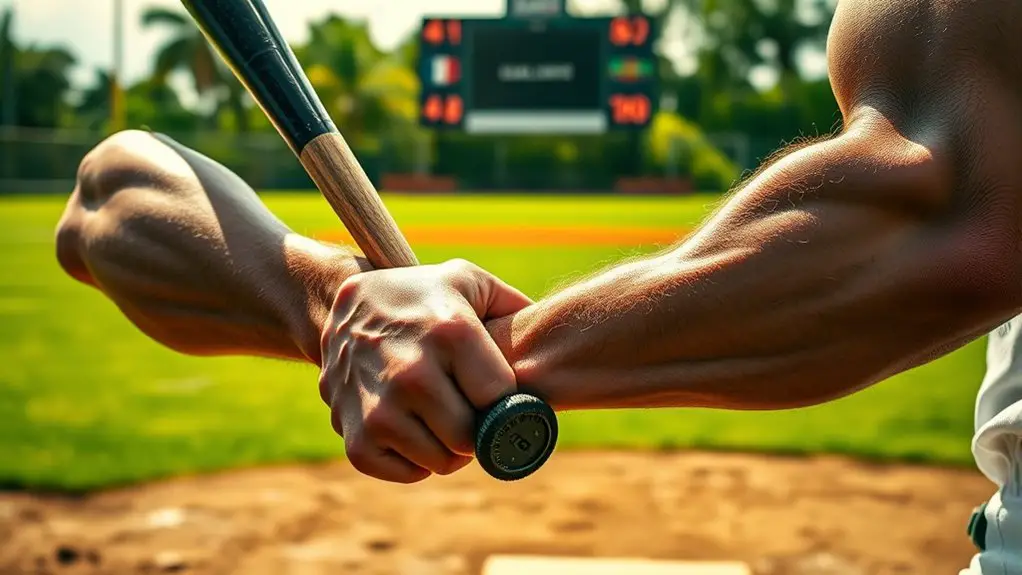To improve your dribbling skills in soccer, focus on mastering ball manipulation using different parts of your foot. Incorporate essential drills like cone weaving and speed dribbling to enhance your agility and control. Practice ball control techniques and develop game awareness for better decision-making under pressure. Observe professional players' styles to inspire your own approach. Keep working on these aspects, and you'll discover even more effective ways to elevate your game.
Understanding the Basics of Dribbling
When you step onto the field, understanding the basics of dribbling is essential for your success as a soccer player. Mastering dribbling techniques gives you the freedom to navigate through defenders and maintain control of the ball. Start by focusing on ball manipulation; it's all about how you touch and move the ball with your feet. Use different parts of your foot—inside, outside, and even your sole—to create various movements. Practice keeping the ball close, so you can react quickly to changes in the game. Remember, it's not just about speed; it's about precision and control. As you develop your skills, you'll find your confidence grows, allowing you to express yourself freely on the field. So, embrace the challenge and enjoy the journey of becoming a more adept dribbler. Your ability to maneuver the ball will open up endless possibilities in every match. Additionally, improving your footwork drills can significantly enhance your dribbling skills by increasing your agility and control.
Essential Dribbling Drills to Practice
Building on your understanding of dribbling basics, practicing specific drills can greatly enhance your skills on the field. One effective drill is cone weaving. Set up a series of cones in a straight line and navigate through them using quick, controlled touches. This'll help improve your agility and footwork, allowing you to maneuver around defenders with ease.
Another essential drill is speed dribbling. Find a straight stretch of field and challenge yourself to dribble the ball as fast as you can while maintaining control. This'll not only boost your speed but also build your confidence to take on opponents during games.
Combine these drills into your routine, and you'll notice a significant improvement in your dribbling skills. Remember, the more you practice, the more freedom you'll feel on the pitch, allowing you to release your full potential when it counts!
Techniques for Improving Ball Control
To enhance your ball control, it's vital to focus on your touch and technique. Start by practicing your foot placement; use the inside, outside, and sole of your foot to develop a versatile touch. Experiment with different angles and pressures to see how the ball reacts. Maintaining proper body posture is just as important—stay relaxed and balanced, keeping your knees slightly bent. This stance allows for quicker reactions and smoother movements.
Incorporate short dribbling exercises that require tight turns and quick stops to improve your control. Use cones or markers to create obstacles, forcing you to maneuver while keeping the ball close. Remember, the key is to stay aware of your surroundings and anticipate where the ball will go next. With consistent practice, you'll find that your ball control improves, empowering you to express your creativity on the field. Additionally, practicing agility ladder drills can significantly enhance your foot speed and coordination, further benefiting your dribbling skills. Enjoy the freedom that comes with mastering this essential skill!
Strategies for Dribbling in Game Situations
Successful dribbling in game situations often hinges on three key strategies: awareness, decision-making, and adaptability. First, you need to develop game awareness. Keep your head up and scan the field. This helps you spot defensive pressure and potential passing lanes. When you see an opponent closing in, assess your options quickly.
Next, decision-making is essential. Sometimes, it's better to dribble past a defender, while other times, a quick pass might be the smarter choice. Trust your instincts and don't hesitate.
Lastly, adaptability is critical. Each game is different, and so are your opponents. Be ready to change your dribbling style based on the defensive pressure you face. This flexibility allows you to exploit gaps in the defense or to retreat when needed. Master these strategies, and you'll elevate your dribbling skills, giving you the freedom to navigate the pitch with confidence.
Analyzing Professional Players' Dribbling Styles
When you watch professional soccer players, their dribbling styles can be as varied as their backgrounds and training. Take a moment to observe players like Lionel Messi and Neymar. Messi's finesse allows him to glide past defenders with barely a touch on the ball. His low center of gravity and quick footwork create a mesmerizing dance that leaves opponents bewildered.
On the other hand, Neymar's flair adds a unique twist. His unpredictable moves and flashy skills often turn the game into a spectacle. By studying these players, you can learn to incorporate elements of their styles into your own game.
Try adopting Messi's precision when controlling the ball and Neymar's creativity with your footwork. Analyzing how they navigate tight spaces and react under pressure will inspire you to find your own dribbling identity. Embrace these influences, and let your dribbling become a true expression of your freedom on the field.
Frequently Asked Questions
What Type of Soccer Shoes Enhance Dribbling Performance?
When you're choosing soccer shoes to enhance your dribbling performance, consider cleat types that provide agility and traction. Firm ground cleats are great for natural grass, while turf shoes work well on artificial surfaces. Look for shoe materials like synthetic uppers for a snug fit and lightweight feel. The right combination can boost your control and maneuverability, letting you express your skills freely on the field. You'll feel the difference in your game!
How Can I Overcome Fear of Being Tackled While Dribbling?
Imagine a fearless knight charging into battle, sword raised high. To conquer your fear of being tackled while dribbling, visualize yourself gliding past defenders with ease, using effective tackling techniques to navigate through. Picture each challenge as an opportunity, not a threat. As you embrace this mindset, you'll find freedom in your movements, letting confidence replace hesitation. Remember, every tackle is just another dance on the field; trust your skills and let your spirit soar.
What Role Does Physical Fitness Play in Dribbling Skills?
Physical fitness plays an essential role in your dribbling skills. When you focus on endurance training, you'll find that you can maintain your energy throughout the game, allowing for more effective dribbling. Incorporating agility drills helps you improve your quickness and coordination, making it easier to navigate through defenders. The more fit you become, the more freedom you'll feel on the field, enhancing both your confidence and performance while dribbling.
How Can I Improve My Weaker Foot for Dribbling?
You've been feeling frustrated with your weaker foot, haven't you? It's time to turn that around with some focused practice techniques. Start with weaker foot drills, like simple passes against a wall or dribbling through cones. Gradually increase the complexity as you gain confidence. Consistency is key—set aside time each day to practice. Soon enough, you'll notice a significant improvement, giving you the freedom to maneuver on the field with ease.
Are There Specific Warm-Up Exercises for Dribbling?
Absolutely, warming up is essential for dribbling. You'd want to start with dynamic stretching to loosen up those muscles. Think leg swings and high knees to get your blood flowing. Then, incorporate agility drills like cone weaves or ladder drills to improve your footwork. These exercises not only enhance your dribbling skills but also allow you to feel more free and quick on the field. So, get moving and enjoy the process!




